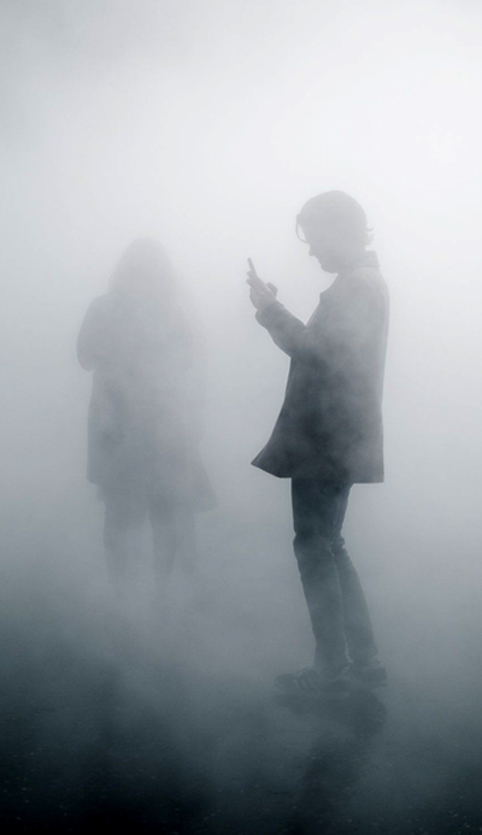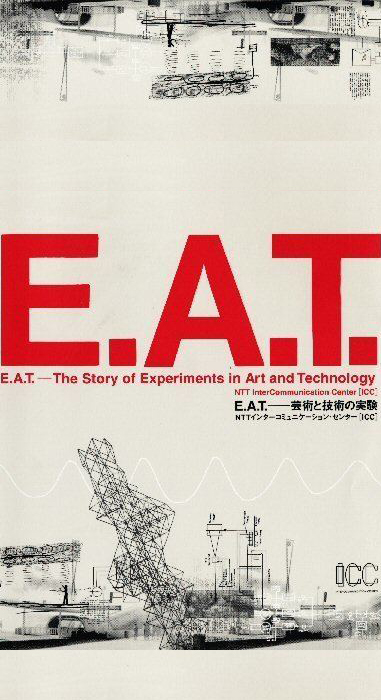


Knight Architects and structural engineers AKT II
Moving footbridge
Paddington, London
Opening in sequence, the bridge’s five beams rise to different angles to create a fan-like effect. The first rises to 70 degrees, while the last lifts high enough to create a clearance space of two and a half metres over the surface of the canal. The weight of the beams – which range from six to seven tons – is balanced by a 40 ton counterweight that keeps the beams steady as they rise and fall.

FUJIKO NAKAYA
中谷芙二子
fog sculptures
ok-offenens kulturhaus linz
In 1970 Nakaya created her first fog sculpture when commissioned by the group Experiments in Art and Technology (E.A.T) to make a work for the Pepsi Pavillion of the Osaka World Exposition. In creating a work of white mist enclosing the building, Nakaya became the first artist to have used fog as a sculptural medium. E.A.T is an organisation devoted to facilitating working relationships between artists and engineers. Nakaya worked with American engineer Thomas Mee to create the fog for her Osaka commission, the technique for which she has continued to use, with minor moderations, for her subsequent fog sculptures since.Whilst Nakaya has also worked in film and video, it is her use of fog for which she is best known. Nakaya has used pure-water fog to create installations, performances, stage-sets and environmental park designs, often collaborating with other artists or with performers, choreographers and composers. Nakaya’s interest in fog has developed from its relation to our visual sense. In a thick fog we become disorientated, frustrated at our inability to see. In this way, Nakaya’s sculptures activate our other senses, to compensate for our loss of sight.

Skylar Tibbits and Arthur Olson
The Self-Assembly Line
Can we create objects that assemble themselves — that zip together like a strand of DNA or that have the ability for transformation embedded into them? These are the questions that Skylar Tibbits investigates in his Self-Assembly Lab at MIT, a cross-disciplinary research space where designers, scientists and engineers come together to find ways for disordered parts to become ordered structures.

E.A.T
E.A.T
Experiments in Art & Technology
In 1966, 10 New York artists worked with 30 engineers and scientists from the world renowned Bell Telephone Laboratories to create groundbreaking performances, known as 9 Evenings: Theatre and Engineering. Artists included Andy Warhol, John Cage, Lucinda Childs, Vyvind Fahlstrvm, Alex Hay, Deborah Hay, Steve Paxton, Yvonne Rainer, Robert Rauschenberg, David Tudor, and Robert Whitman. Notable engineers involved include: Bela Julesz, Billy Kluver, Max Mathews, John Pierce, Manfred Schroeder, and Fred Waldhauer.

Cerith Wyn Evans
СЕРИС ВИН ЭВАНС
ケリス·ウィン·エヴァンス
Form in Space…By Light
‘Cerith’s installation sits beautifully within the space, unfolding as you walk through,’ explains Clarrie Wallis, Tate’s Senior Curator of Contemporary British Art. The neon experience builds, from a single ‘peep hole’ ring in the South Duveens, through which you can glimpse swirls of radial light and an imposing octagon in the central gallery. The fractured neon fragments look like frantically drawn sparkler-lines on fireworks night.But there’s method and logic within these celestial scribbles. Hidden in the design are references to a host of highbrow sources, from Japanese ‘Noh’ theatre, to Marcel Duchamp’s The Bride Stripped Bare by her Bachelors, Even (The Large Glass), 1915-23. Don’t worry if you missed them. The beauty of rendering precise (verging on obscure) references in such a celebratory neon explosion allows for multiple – if not endless – interpretations.Each way you look at the sprawling 2km of neon tubing, a different shape or symbol emerges. No small thanks to the elegant way in which the structures have been painstakingly suspended. ‘There were over 1000 fixing points, and obviously we couldn’t drill 1000 holes in the Grade II listed building,’ Wallis explains. ‘We had to work with structural engineers very intensely, so as to be completely happy and convinced that we would be able to remove it without damaging the fabric of the building.’Though it seems too soon to be discussing the installation’s removal, Wallis has a point. It’s a visibly fragile, delicate sculpture – whose impermanence makes it more intriguing. As it is a site-specific sculpture, it can’t be recreated elsewhere. What’s more, because the neon tubes are filled with a constantly moving stream of pulsing, vibrating gasses, visitors will never see the same sculpture twice.